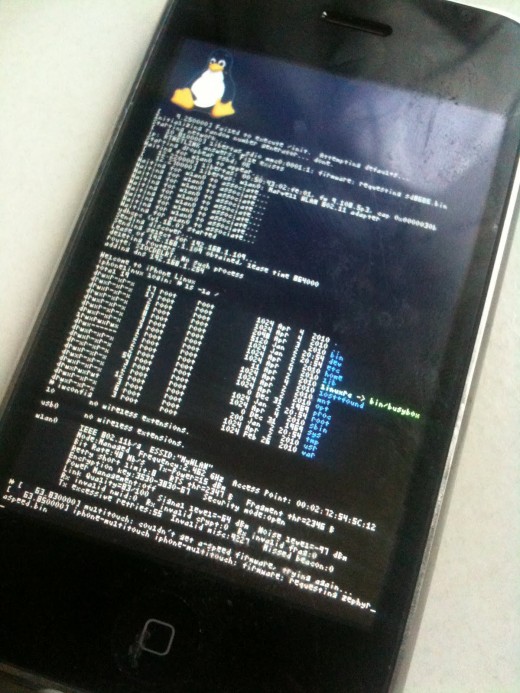How To Install Android On The iPhone 2G
Still wondering how to install Android on the iPhone? Well, a detailed guide is now available if you plan to try Google’s OS on your trusty old 1st generation iPhone (iPhone 2G). The trick is to basically load of the Android files on the iPhone via a file explorer (iPhone Explorer), run Ubuntu in a Virtual Machine or you PC or Mac to install Openibot on the handset.
Introduction:
Today’s hype has all been about Android on an iPhone. As soon as I heard I knew what I’d be doing after work. Anyway, I’ve finally managed to get Android working and thought I’d write up a clear tutorial for anyone who wants to do it. Remember, I did this all on a Mac, but it should be possible on Windows or Linux too. Windows users just get the Windows version of Virtual Box.
The end result is far from a fully working Android system. It’s Android 1.6 with basic features calls, texts, WiFi but no camera and probably a few Force Closes. It’s easy to upgrade Android versions once you’ve managed to get to the end of this tutorial so there’s no harm in getting the hard part out of the way now!
Downloads
Here’s a bunch of stuff that you’ll need before you start:
- Important! Jailbroken iPhone 2G
- VirtualBox (link). Get the right version Windows/Mac
- VirtualBox Ubuntu Image (link). Download number 10, Ubuntu Linux 9.10 codename Karmic Koala x86
- iPhone Explorer (link). If you’re on Linux you can use FTP such as FileZilla instead.
- Android images and sources (link)
- Patched images (link). Courtesy of Geekoid.
Preparation
Let’s get some of the basics out of the way:
- Open Task Manager
- Kill the iTunes Helper process
- Install iPhone Explorer
- Connect your iPhone to your Mac/PC
- Run iPhone Explorer
- Click the Change Root button
- Select “/” Real iPhone Root Directory
- Browse to private/var
- Copy ramdisk.img, userdata.img, cache.img and zImage from Downloads#5 (Android images and sources) to that var directory
- Copy system.img and android.img.gz from Downloads#6 (patched images) to the that var directory
- That’s all the Android files on your iPhone, now to make them run!
Setting Up Virtual Box
- Install VirtualBox
- Open VirtualBox
- Go on File > Virtual Media Manager
- Make sure Hard Disks is selected
- Click Add
- Locate the ubuntu-9.10.vdi file (download#3) and select it
- Close Virtual Media Manager
- Go on Machine > New
- Click Next
- Under Name enter “Ubuntu”
- Select Linux Operating System
- Select Ubuntu Version
- Click Next
- Set an amount of RAM, the default should be fine
- Click Next
- Select “Use existing hard disk”
- Select the ubuntu-9.10.vdi
- Click Next
- Click Finish
- Select that new machine to start up Ubuntu
- The password to login is: reverse
Setting Up Ubuntu
Almost there if this feels a bit long, just consider how short and simple each step is!
- Click System (top bar) > Administration > Synaptic Package Manager
- Enter the password: reverse
- In the quicksearch box, type libusb-1.0, click the Check Box next to libusb-1.0-0 and select Mark for installation
- In the quicksearch box, type libreadline, click the Check Box next to libreadline5 and select Mark for installtion
- Click Apply
- When it’s all installed close the Package Manager
- Open Firefox (in Ubuntu)
- Download openiboot installer from here
- Click Places (top bar) > Downloads
- Right-click openiboot.zip and click Extract Here
- Click Applications (top bar) > Accessories > Terminal
- Without the quotes, type ‘cd Downloads/openiboot’
- Restart your iPhone in Recovery Mode (power off, hold down Home button, connect to USB cable)
Getting Android Working!
Well done on getting this far! This is where the fun beings (credits to WinX Blog for these instructions link)
- In VirtualBox, the Ubuntu Window, go on Devices > USB Devices and select iPhone (Recovery Mode)
- In the terminal type (without quotes): ’sudo su’
- Enter the password: reverse
- In the terminal type ./loadibec openiboot.img3
- You’ll see the OpeniBoot screen appear on your iPhone
- Hold down the power button a couple of seconds (iPhone)
- The bottom option, openiboot console, will become selected
- Press Home (iPhone). You’ll see a bunch of text appear and stop at “Welcome to openiboot”
- In VirtualBox, the Ubuntu Window, go on Devices > USB Devices and select iPhone (OpeniBoot Mode)
- In terminal type su ./oibc
- Enter the password: reverse
- If this doesn’t work just type: ./oibc
- You’ll see the same text from the iPhone in the Terminal
- Type (without quotes) ‘nor_read 0×09000000 0×0 1048576′ and press Enter
- Wait for it to say Done
- Type (without quotes) ‘~norbackup.dump:1048576′
- This creates a backup of your NOR memory – save a copy on USB stick, or email it to yourself or something
- Type install, press Enter. When this is done you’ve got openiboot installed on your iPhone. You’re done!
Finishing Off
What you’ve achieved up til now is Android files on your iPhone, and then installing openiboot so that you have an option to start iPhone OS or Android when you turn on your phone. Openiboot was necessary because that’s the only way right now that you can boot into Android. Here’s how to finish off and get into Android:
- If you still have Terminal open with the oibc still running, just type ‘reboot’, press Enter and skip to step 3
- If you don’t have Terminal open, disconnect your phone, turn it off and back on
- When openiboot appears press Power button to switch to openiboot console (bottom option)
- Hold down the Home button
- Android will start to boot, but it might take a while.

